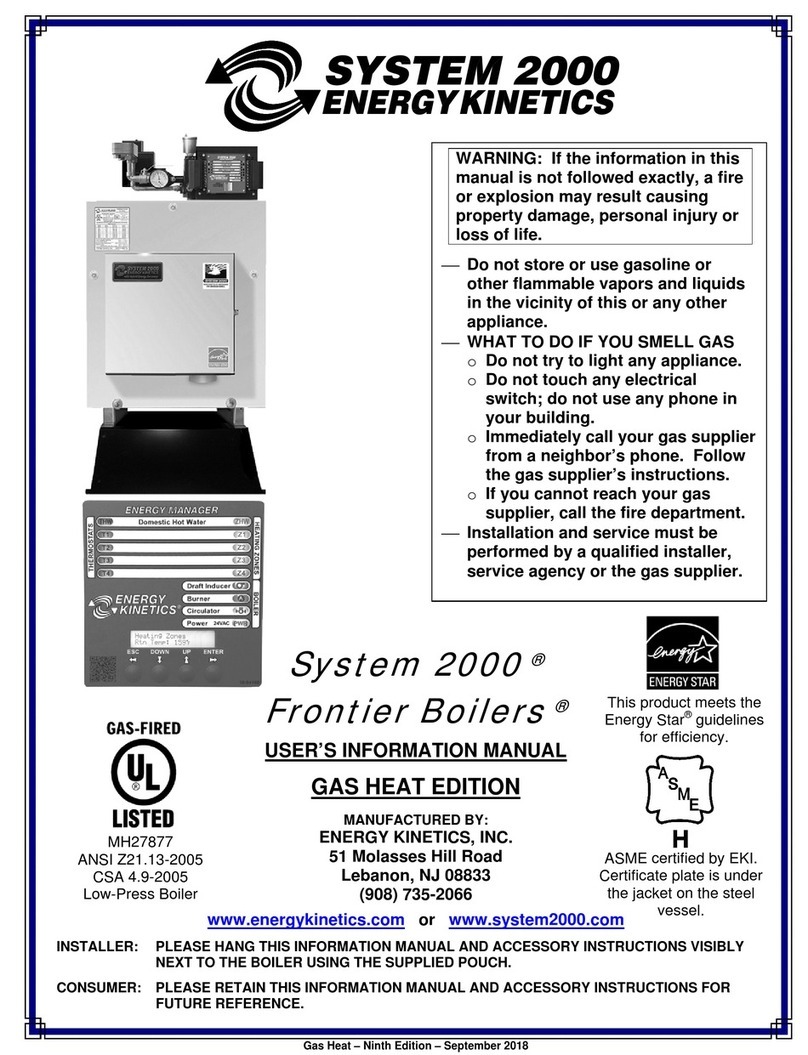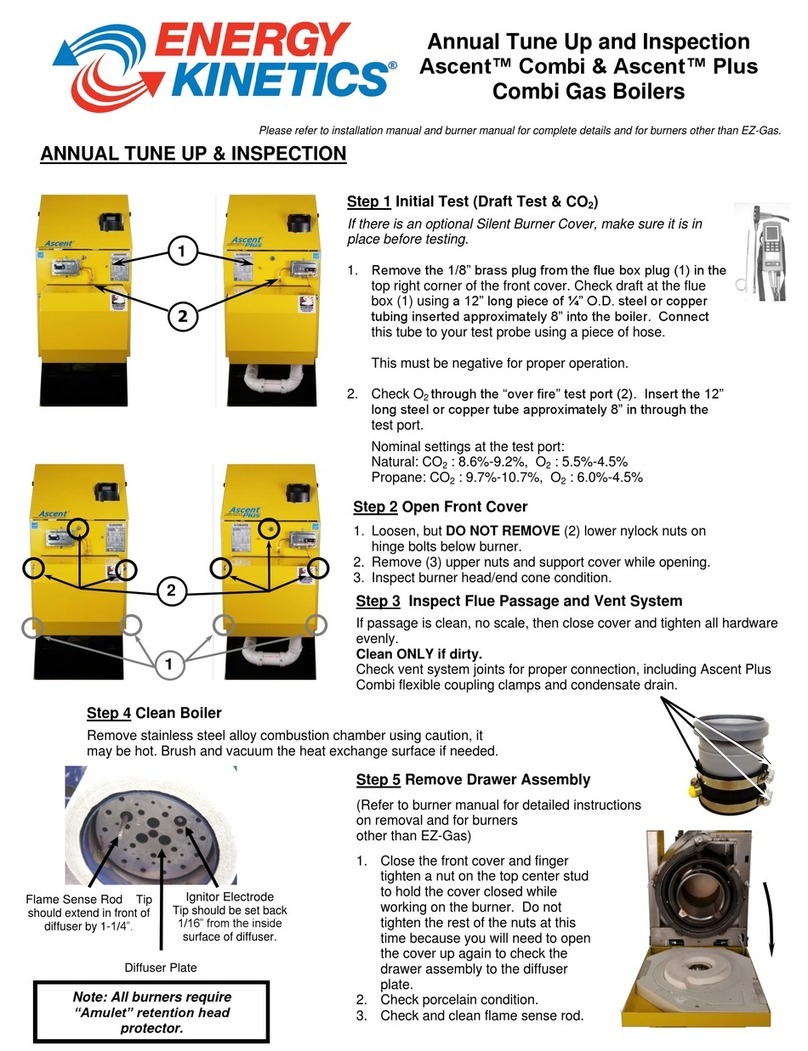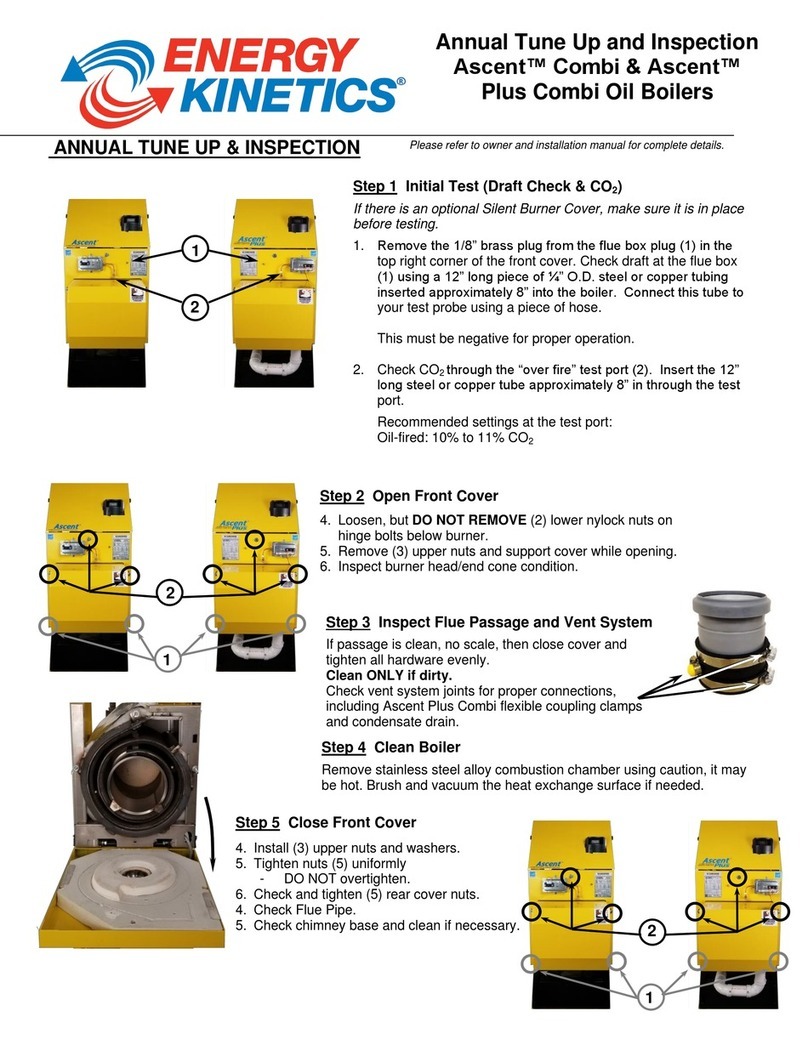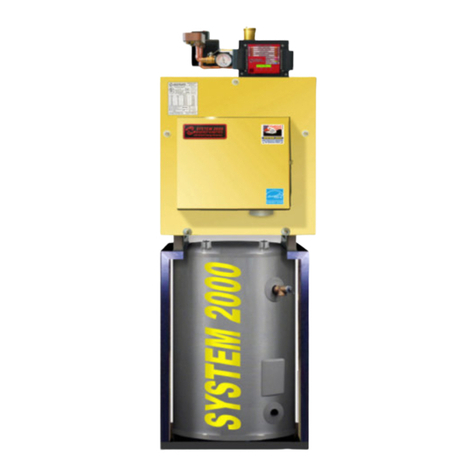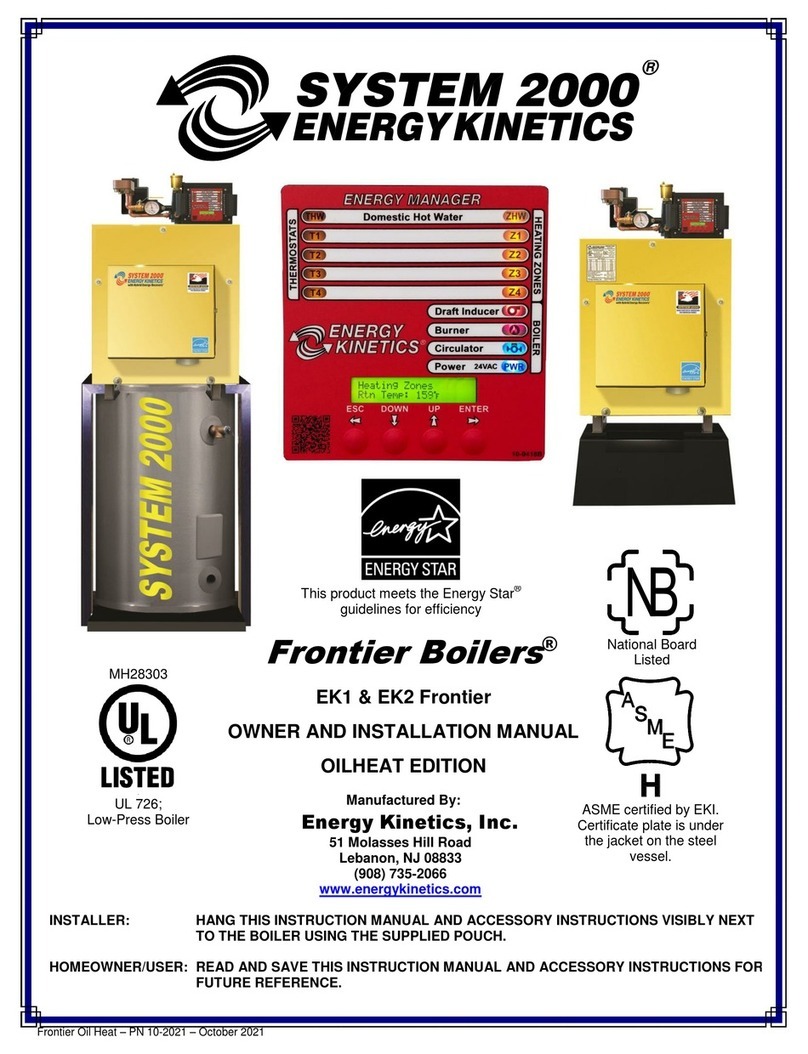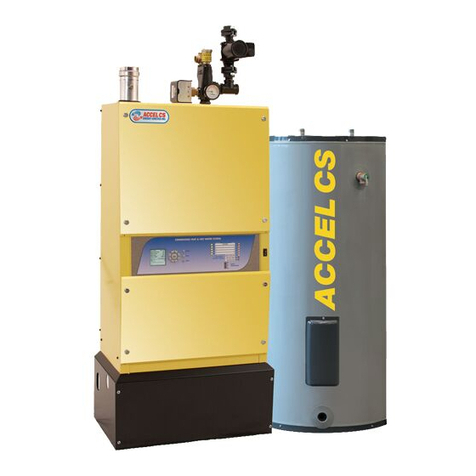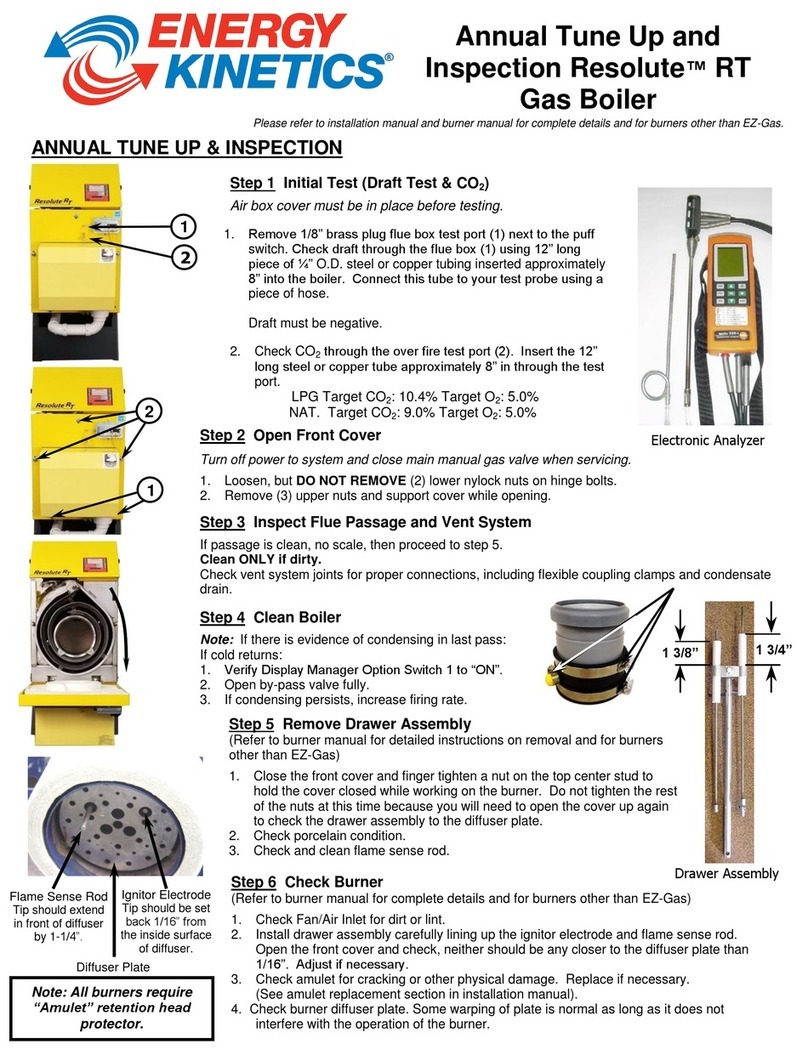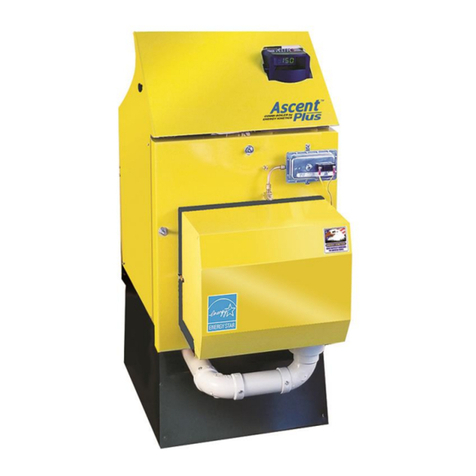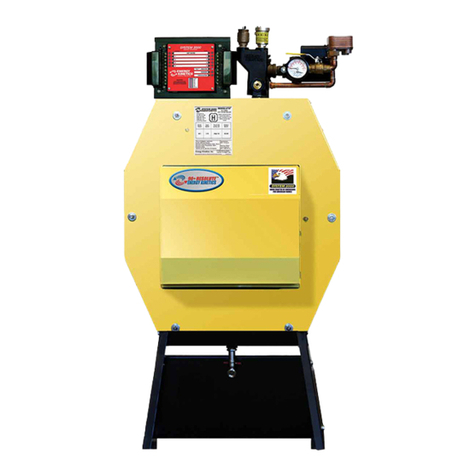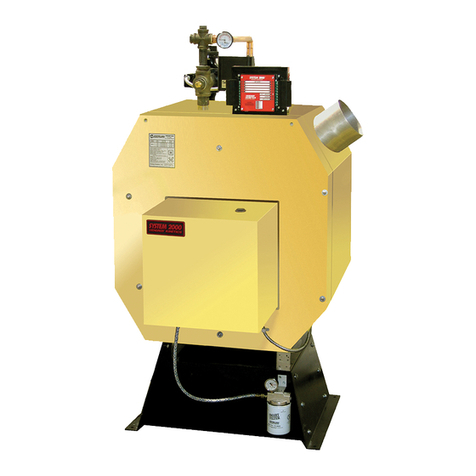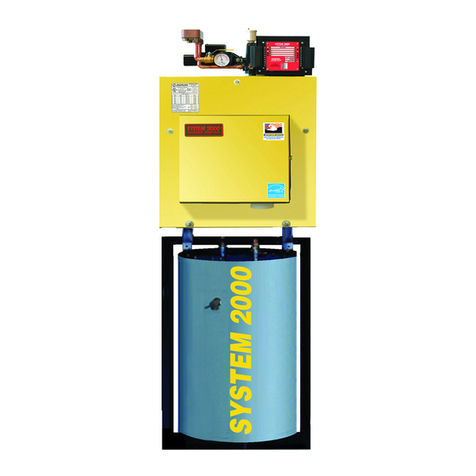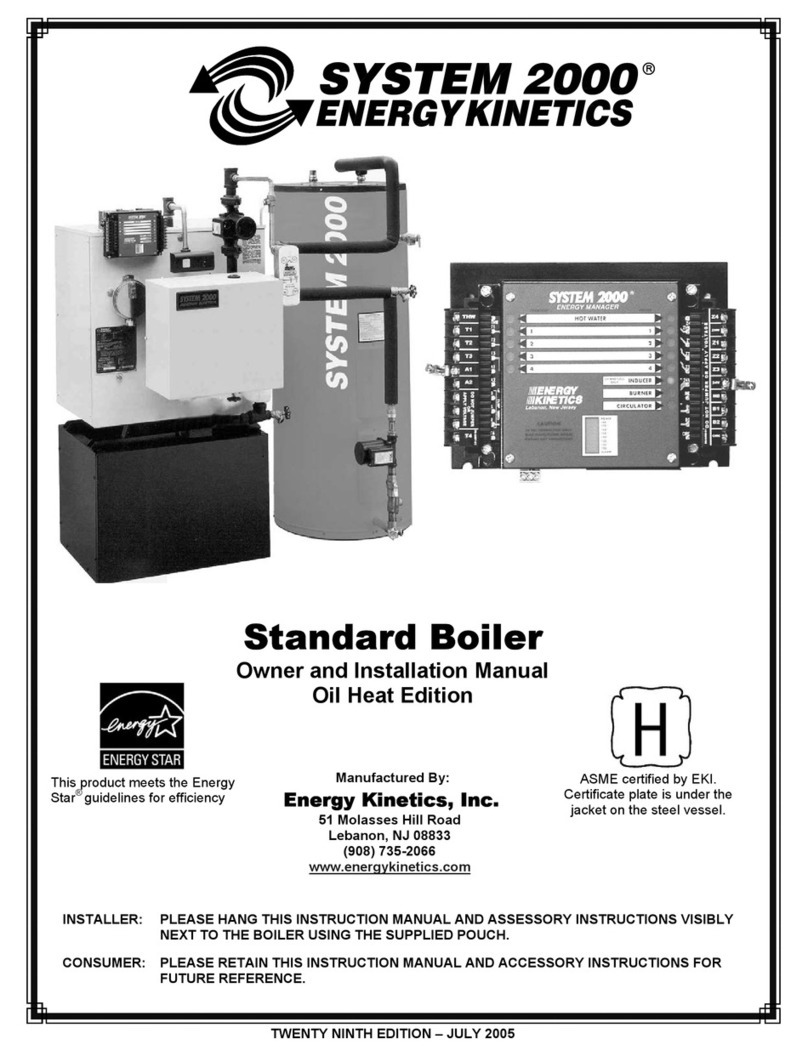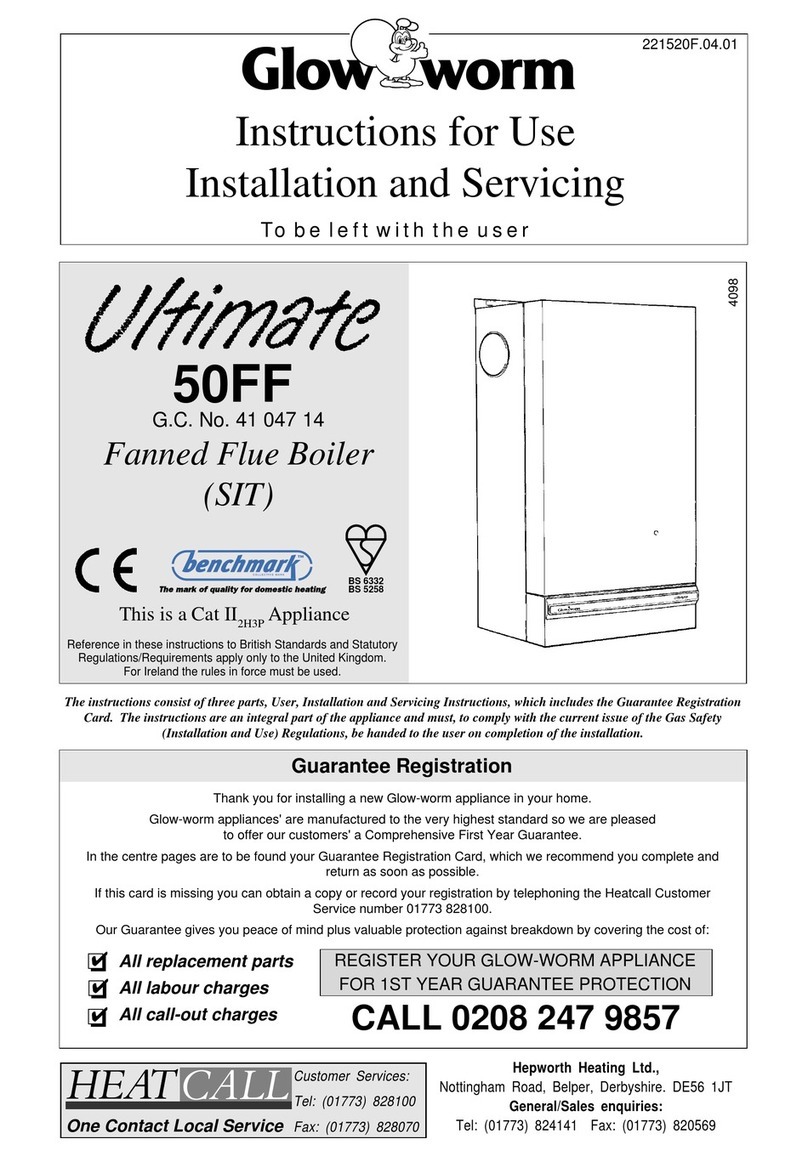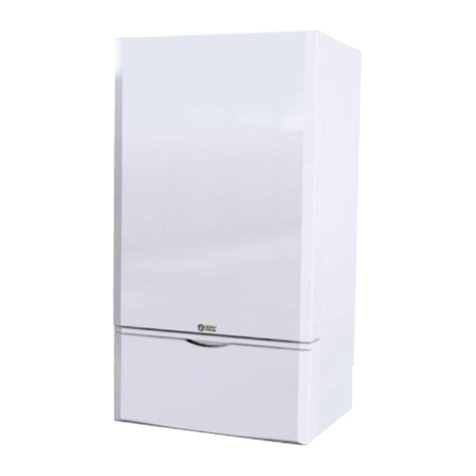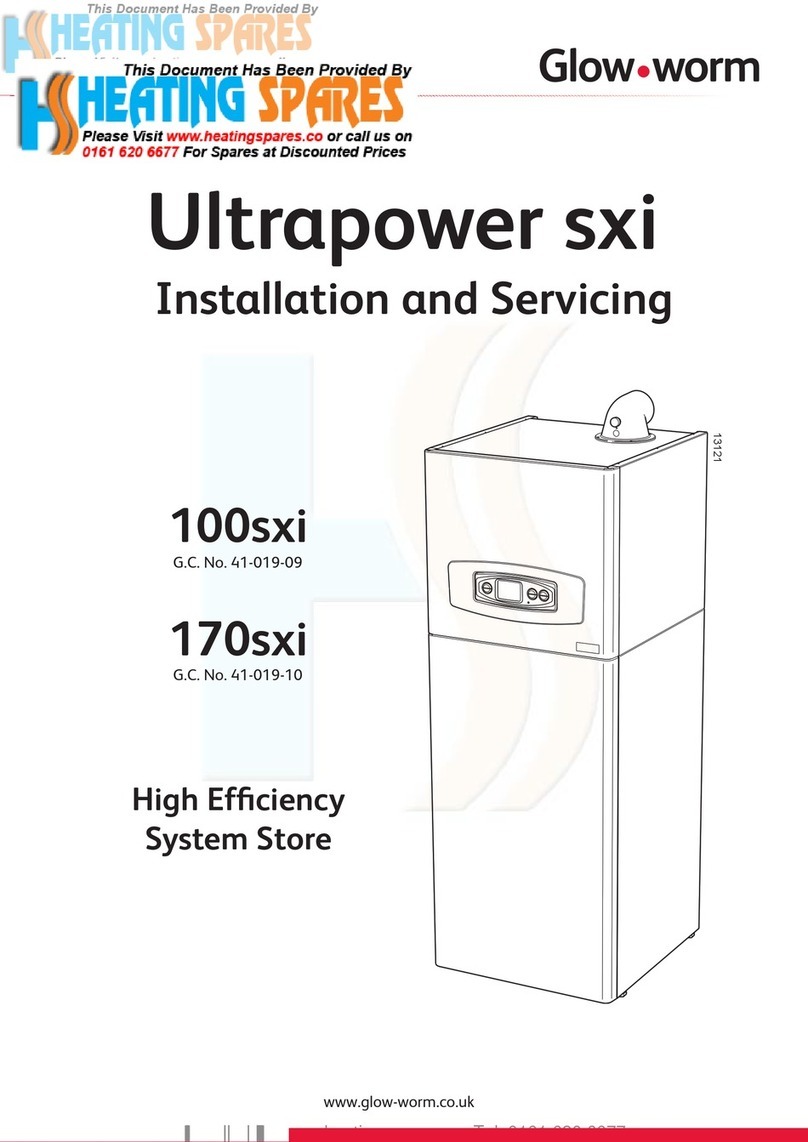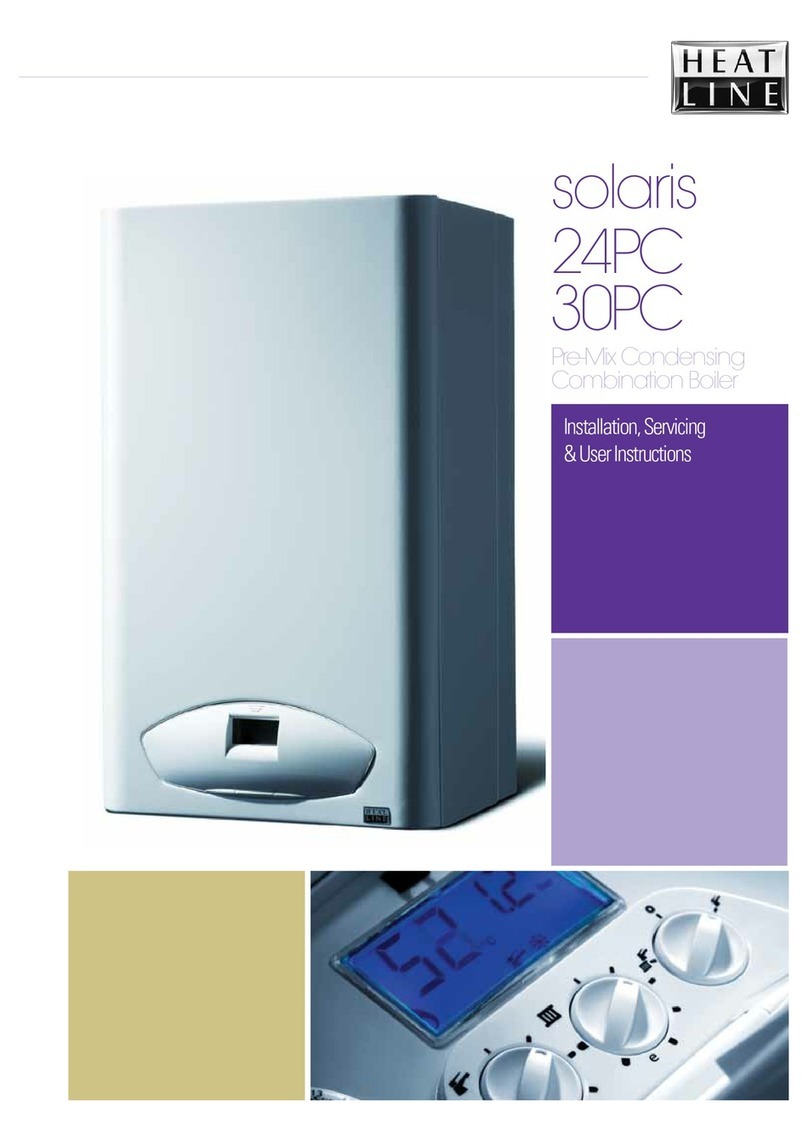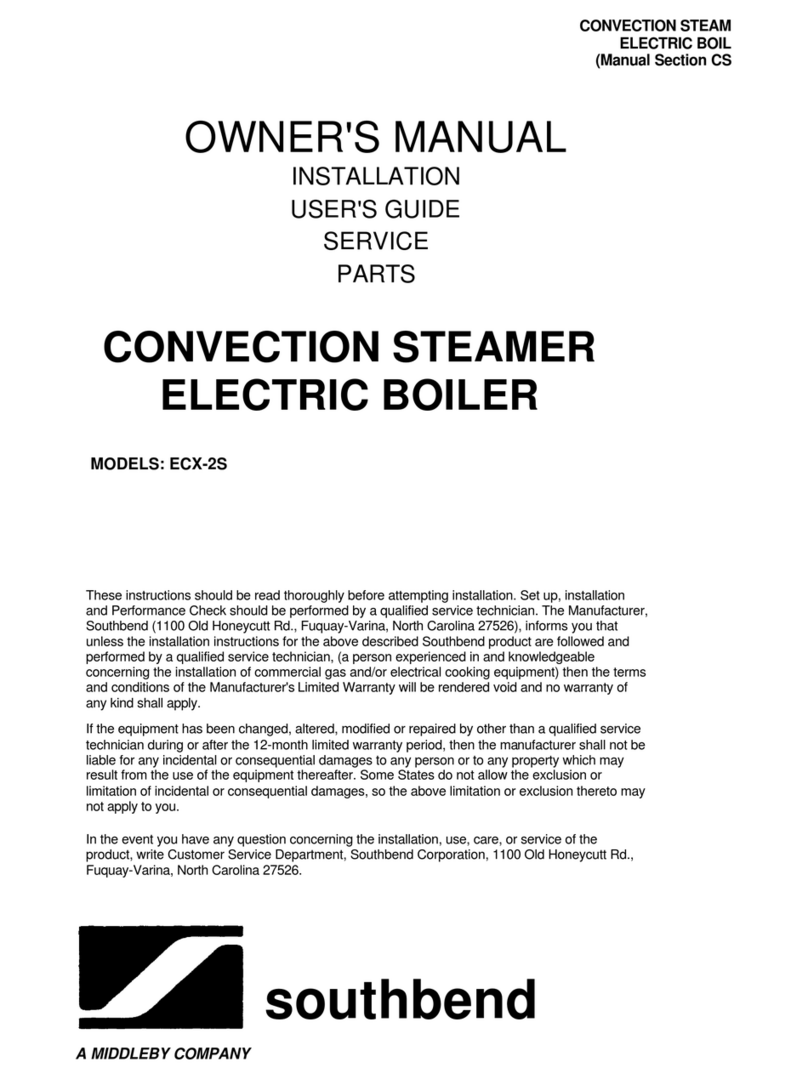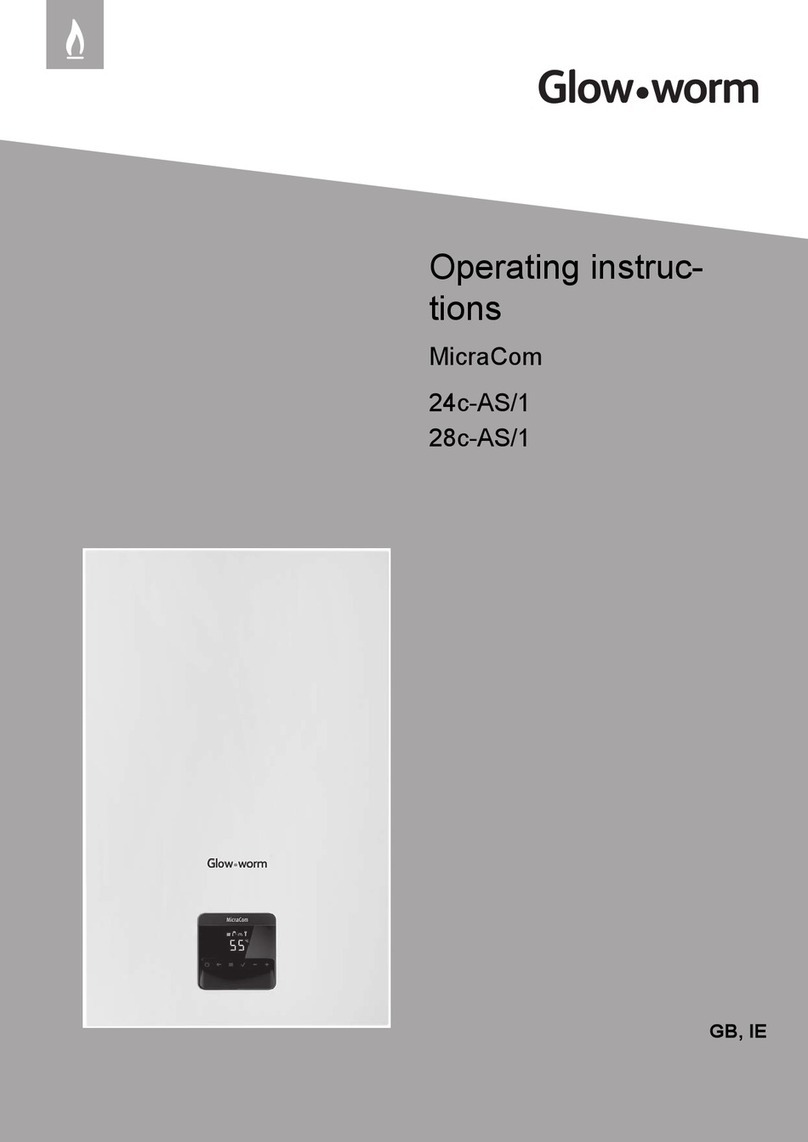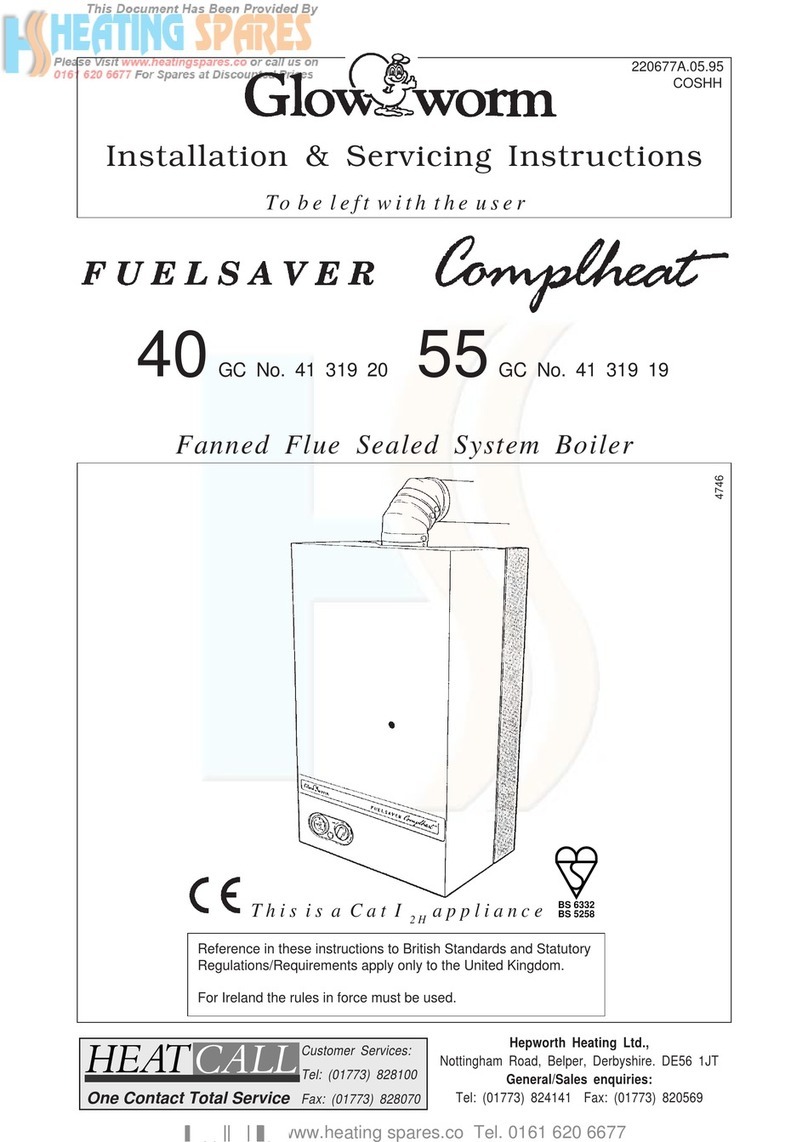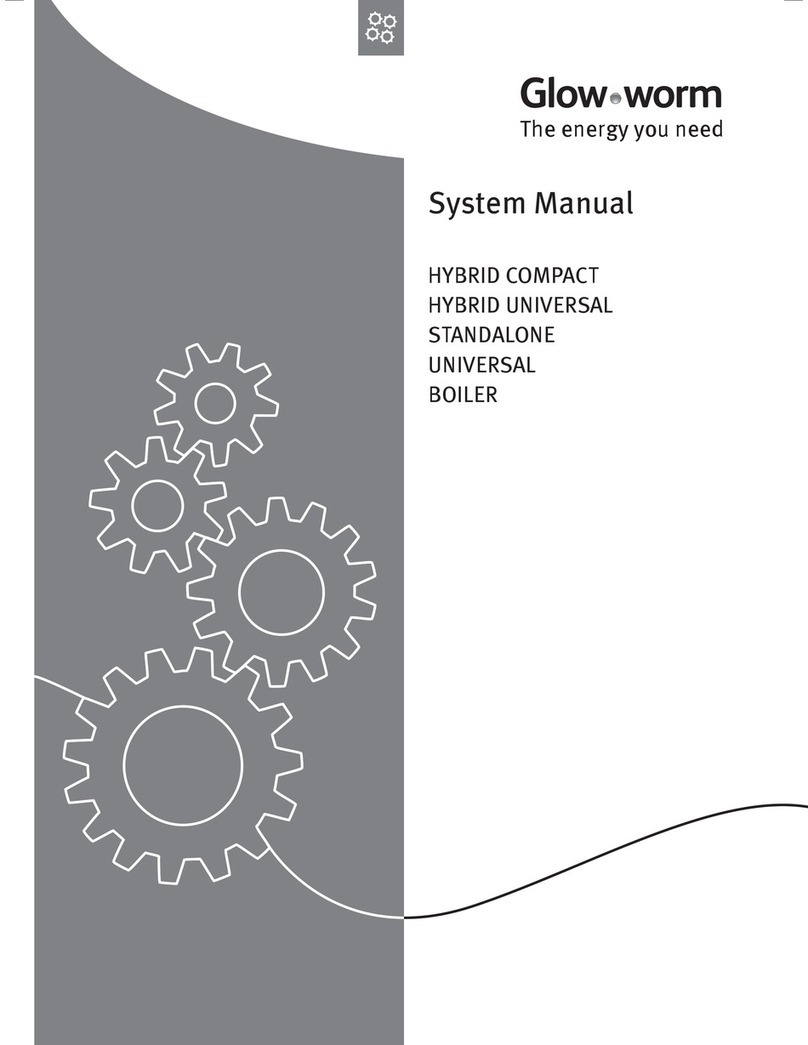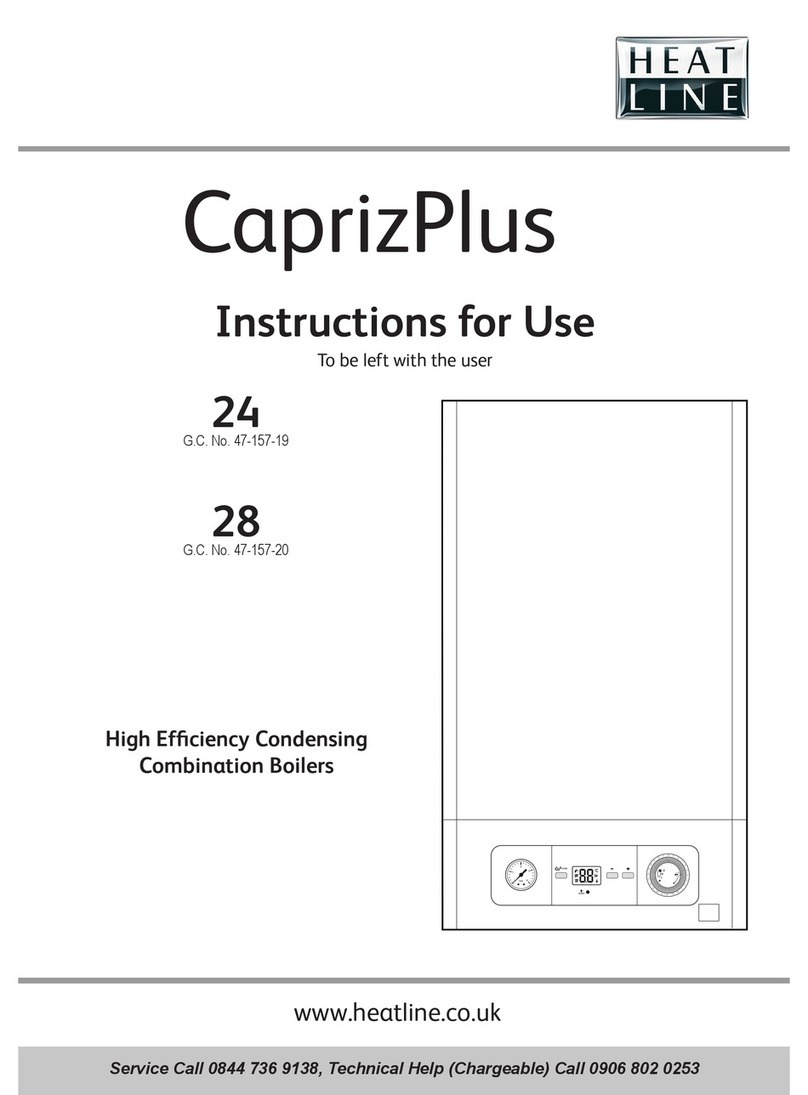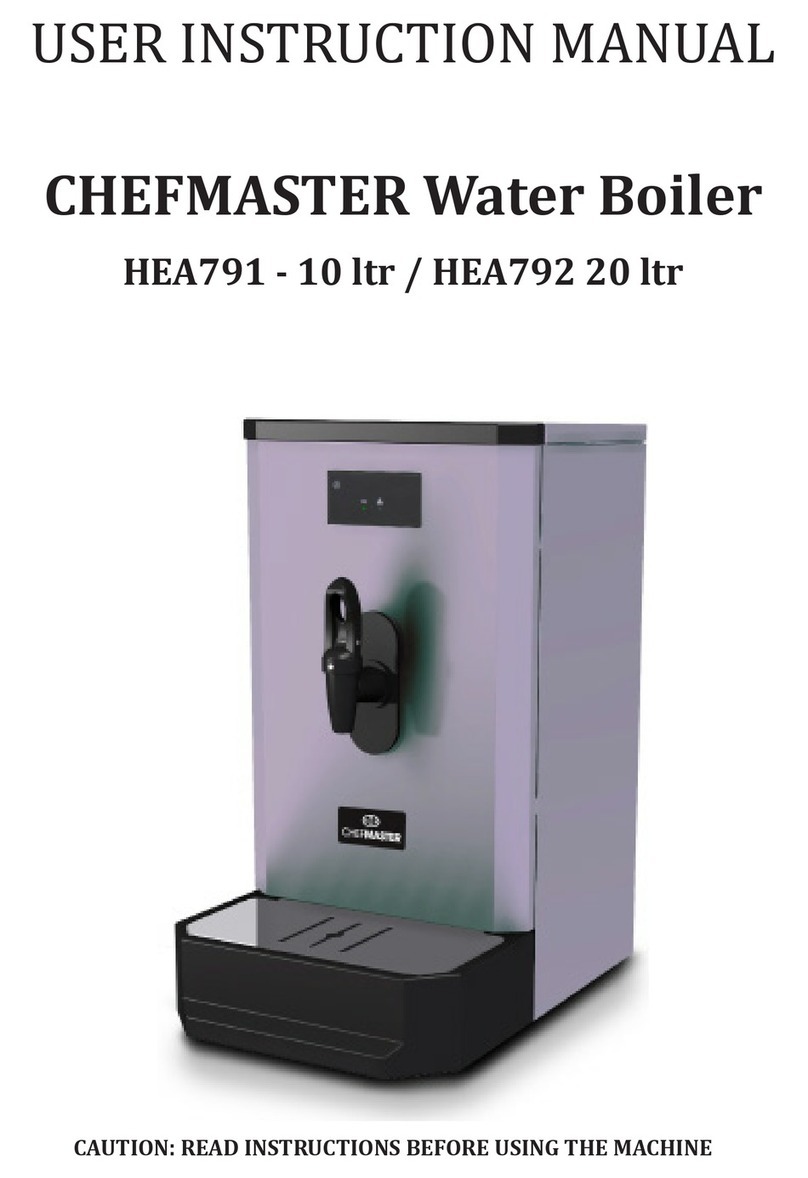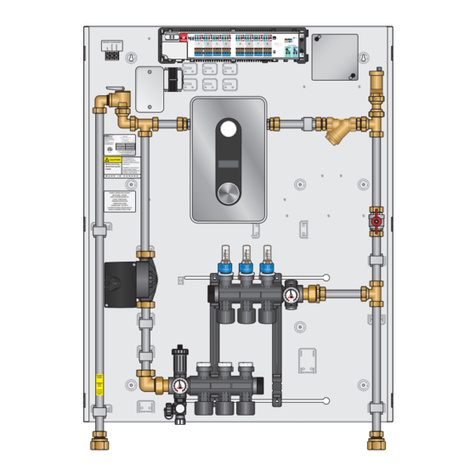
Ascent Combi and Ascent Plus Combi Gas – January 2024 10
WARNING: Modern buildings of tight construction, as well as the operation of attic and exhaust fans, kitchen ventilation
systems, clothes dryers or fireplaces may create conditions of unsatisfactory combustion or venting.
Provisions must be made to use combustion air that communicates with a well-ventilated attic or with the
outdoors (such as using a louver or grate). The opening should have a free area of not less than one (1)
square inch per 4,000 BTU per hour of the total input rating.
Boiler without outside air piping:
WARNING: The confined space shall be provided with two permanent openings, one near the top of the
enclosure and one near the bottom. Each opening shall have a free area of not less than one square
inch per 1,000 BTU per hour of the total input rating of all appliances in the enclosure, freely
communicating with interior areas having adequate infiltration from the outside.
CONVENTIONAL CHIMNEY VENTING – EK1T ASCENT COMBI ONLY
DANGER: Improper chimney installation or operation may cause flue gas leakage and/or carbon monoxide leakage,
which may lead to severe injury or death.
When connecting an Energy Kinetics EK1T Ascent Combi boiler to an existing chimney, be sure to follow all applicable
local, state, and national codes that may differ from this manual, and in accordance with the following codes, as applicable:
ANSI Z223.1/NFPA No. 54: National Fuel Gas Code
In retrofit installations, have the chimney thoroughly cleaned. Carefully inspect the chimney, base of chimney, and liner
prior to installation of the Ascent Combi Boiler.
WARNING: Masonry chimneys must have a tile or metal liner. The liner must:
1) Extend above the masonry.
2) Have an insulating air gap, isolating the liner from the chimney, allowing for rapid heat-up and draft
establishment.
3) Be sealed at each joint to prevent air infiltration and damage from condensation.
NOTICE: Inspect Chimney and Chimney base after initial three months of heating season.
The installation of a chimney cap is recommended. The base of the chimney must always have a drop leg below the
flue connector to allow scale and condensation to accumulate without blocking the flue pipe. Do not block the flue opening
by inserting the flue connecter too deeply into the chimney.
Best Practice: If drop leg is in excess of 12 inches deep, backfill with loose gravel or sand to obtain a maximum of 12-inch
depth. Use of fiberglass insulation to backfill the drop leg is also a practical method. All clean out doors should be closed,
and if practical also sealed with silicone, to prevent cold air entry into chimney. Clean out doors that are sealed with
silicone can still be opened every tune up to inspect and clean the drop leg, and then resealed with silicone for another
year. Pay particular attention to cleanout doors that are located out of doors.
CAUTION: If chimney liner is not sound or if existing tile liner fails to contain intermittent condensation, or if excessive
debris is found at the base of the chimney, then it is recommended to install a properly sized metal liner approved for use
with gas heat appliances.
The metal liner diameter and length should be as recommended by the metal liner manufacturer. Corrugated metal
liners should be at least 5”diameter for EK1T Ascent Combi (a 6” diameter chimney liner may be required at 1.25 GPH firing
rate). Energy Kinetics has 5” flexible metal chimney connectors available to be used between the boiler flue collar and the
chimney. Call Energy Kinetics for details on metal liners.
Chimney connectors should be positioned to create the shortest possible run of flue pipe to the chimney. If a 6”
diameter chimney liner is used, it is recommended that the chimney connector be 6” diameter too by using a short piece of
5” to 6” adapter at the flue outlet. The overall horizontal length of flue piping should not exceed 15 feet. Long runs or low
firing rates may require insulated flue pipe such as B-Vent, L-Vent or All-Fuels to keep the temperature at base of chimney
adequate for draft and to prevent corrosion of piping and connectors.
Because the Ascent Combi boiler uses a power burner, the flue pipe may experience some positive pressure on start
up. Energy Kinetics recommends that all pipe joints be sealed with high temperature silicone sealant to ensure passage of
all combustion products to the chimney.
Normally, pitch horizontal flue pipe up toward chimney approximately ¼” per foot. For existing installations, it is
permissible for the flue connection of the boiler to be higher than the chimney thimble, provided adequate draft is
established.
If a minimum of -0.02” w.c. draft at the breech is not present after sufficient burner run time to heat up the chimney,
there is a problem that will need to be corrected. Call Energy Kinetics for help resolving draft problems. Under normal
circumstances, there is NO need for a DRAFT REGULATOR and one should not be installed. Call Energy Kinetics with
questions about flue pipe sizing.
WARNING: No solid fuel appliance or fireplace should be installed in a flue common with this heating appliance. The flue
gas exit of the venting system must be at least three (3) feet above the point at which it passes through the roof and at least
two (2) feet higher than any portion of a building within 10 feet horizontally of its location.





















